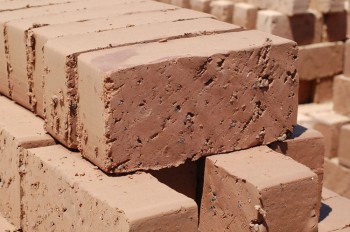Technical Note #34 Energy Efficient Technologies – Lignosuphate Conditioning
Lignosulphonate clay conditioners have been shown to provide benefits such as improved clay workability and increased extrusion rates which result in reduced power consumption during extrusion. Biokeram additives reduced the current drawn by the extruder by almost 7%.
The additives are said to also improve dry strength; reduce salt scumming and provide an overall improvement in clay brick quality.
Results - Brickmaker 1
The additives reduced the current drawn by the extruder by 6.9% equating to an annual potential saving of 26,654 kWh or R24,655. It was also possible to maintain the extruder current but reduce the water addition rate. A reduction in extruded moisture content can bode well for drying. However, due to the quantity of dryer fuel that the brickmaker is mandated to use as well as their shift structure, there is little incentive for them to improve drying efficiency.
Nevertheless, a reduction in overall green waste from 4.5% to 1.2% was recorded which can be attributed to an increase in green strength. Unfortunately, labour issues prevented measurement of any change in fired waste production and there were no changes seen in the aesthetics of fired bricks.
Results - Brickmaker 2
Automated water addition at prevented any measurement of a reduction in extruder current. However, an increase in extrusion speed of 4.7% was measured with the additive.
Currently, The company's operating structure does not lend itself towards leveraging this extrusion speed increase but theoretically, an annual benefit of approximately R64 228 could be derived from this. The additive also increased column hardness suggesting a useful increase in green strength even though extruded moisture content actually rose slightly during the test (possibly due to AB’s automated water addition system).
Notwithstanding the increased green strength, no meaningful quality or waste differences could be detected after drying nor was there any change in the percentage fired waste produced – this suggests that issues run deeper than a clay conditioner can penetrate. Nevertheless, a marked improvement in the aesthetic appearance of the fired product was seen due to scumming reduction. Unfortunately, the brickmaker's focus is on the plaster brick market where price is much more critical than aesthetics. Hence, the manufacturer has no business case that will justify any cost expended on aesthetics.

